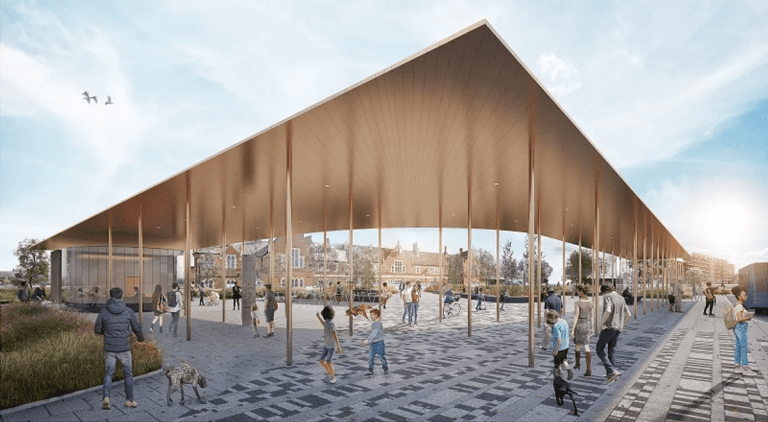HS2’s construction partner for the West Midlands, Balfour Beatty VINCI (BBV), has welcomed its 500th apprentice, Kordell Carty. The 26-year-old Aston resident started his early career on house-building sites and supporting loft and garage conversion projects. Now, Kordell is helping to deliver Britain’s new high-speed railway as an apprentice formworker. When work slowed down during and after Covid-19, Kordell began to explore new career opportunities. He learned about the formworking apprenticeship through a friend, who had applied for a steel fixing apprenticeship on HS2, and was keen to work on a large-scale project that would contrast with his house-building experience. Although the profession of formworking – creating the foundation elements used to make temporary and permanent concrete structures – was not an area of work he was familiar with, Kordell was drawn by the fact that he would be working on the prestigious HS2 project. With a level 2 apprenticeship qualification now underway, Kordell is currently based at the site of HS2’s River Blythe bypass bridge, working for Galldris as part of the BBV supply chain. Here, he is part of a 35-strong team building a structure that will allow the high-speed line to pass above a brook and a bypass channel of the River Blythe in Warwickshire. Kordell said: “The highlight of working on HS2 is being able to see first-hand the progress of the project. I’m taking in as much as possible – I’ve never worked on a construction site of this scale, and I was intrigued to see what it would be like! “My colleagues are great, and I really enjoy working onsite. In the future, I’m looking forward to seeing the finished railway and being able to say that I helped to build it.” As well as learning on the job, Kordell studies at BBV’s Warwickshire-based apprenticeship training hub. The dedicated hub was developed in direct response to a skills gap in the project, and the wider industry, and plays a pivotal role in ensuring workers are accredited and job-ready to support the construction programme. The facility opened its doors in 2023 to deliver steel fixing and formwork apprenticeship training. It has supported over 30 local jobseekers so far. BBV’s 100th apprentice, Benjamin Richards-Moss, who is based at the joint-venture’s Skills Academy in North Warwickshire, has gone on to secure a permanent job on HS2 following completion of his apprenticeship in business administration. Promoted to the role of Training Coordinator, Benjamin plays a key role in the administration function supporting the Skills Academy. He said: “Working for HS2 is one of the best things anyone can do. My advice would be to talk to people around you, get to know what the project is about and this way you will build a great support network. “The project is very exciting, and I believe it will transform the local economy and enhance social mobility between Birmingham and London.” HS2 will underpin the construction industry for years to come, bringing thousands of newly skilled people into the workforce. To date, 1,865 apprentices have joined HS2 and its supply chain – putting the project firmly on track to meet a target of generating at least 2,000 apprenticeships over the lifetime of the programme. Julie Venn-Morton, Senior Skills and Inclusion Manager at HS2 said: “Apprenticeships are crucial in helping us to deliver HS2 and integral to our drive to leave a lasting skills legacy for people in the West Midlands and beyond. “We are very proud to see BBV reach this milestone, which supports our mission to upskill the next generation of construction workers. We wish Kordell a very warm welcome to the project and congratulate Benjamin on successfully securing a permanent role on HS2.” HS2’s construction is now supporting more than 31,000 jobs – including apprenticeships, graduate trainees and through dedicated skills and employment programmes that support unemployed people back into work. Once operational, HS2 will improve connections between London and the West Midlands, with trains running further north on existing lines. The new high-speed railway will create quicker and more reliable journeys, driving economic growth while freeing up space for more local trains on the most congested part of the existing West Coast Main Line. For details about career and employment opportunities available with HS2 and its supply chain partners, visit hs2.org.uk/careers Building, Design & Construction Magazine | The Choice of Industry Professionals














